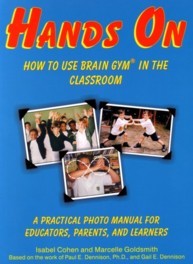
With all the new research into the correlation between brain function and movement, it is clear to see why these movements have worked so well, they often bring about dramatic improvements in areas such as:Īcademics: reading, writing, math, test taking Dennison who say that the interdependence of movement, cognition, and applied learning is the basis of their work.Ĭlients, teachers, and students have been reporting for over 30 years on the effectiveness of these simple activities. Dennison and his wife and colleague, Gail E. The twenty-six activities, along with a program for “learning through movement” were developed by educator and reading specialist Dr. These activities recall the movements naturally done during the first years of life when learning to coordinate the eyes, ears, hands, and whole body. You can learn more about at Brain Gym at 26 Brain Gym® movements, exercises, or activities refer to the original 26 Brain Gym activities, sometimes abbreviated as the 26. You will be noticeably calmer after that time.

One of the most important Brain Gym movements that integrate both hemispheres in the brain is the “lazy eight” or the “infinity” sign. When all parts of the brain communicate together, then “laterality”, “focusing” and “centering” take place.

To create brain coordination, the Dennisons put forth the idea of coordinating the right and left hemispheres of the brain along with the front and back and top and bottom. Learning is not an isolated aspect of just brain functioning, but rather an integral part of every nerve and every cell connection to our bodies. When the brain has energy, the learning process improves.

These movements are based on the fundamental idea that simple exercises help increase blood flow to the brain which provides oxygen and keeps the brain more alert.
#Hook ups brain gym series
They designed 26 Brain Gym activities in a series of exercises that improve academic performance. Brain Gym or Educational Kinesiology (Edu-K) was developed in the 1980s by educators Paul Dennison PhD and Gail Dennison who recognized the concept of “brain-body” integration.


 0 kommentar(er)
0 kommentar(er)
